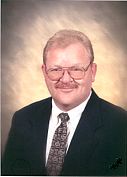
The source of the Kern River of California is in a great mountain amphitheater about 12 miles in diameter, lying mostly above timberline at an elevation of more than 11,000 ft. above the sea. In this amphitheater are scores of lakes in depressions scooped out by long-vanished glaciers. From these lakes emerge numerous streams which either flow into the headwaters of the Kern, or fall over the lofty rim of its great canyon.
Most of the lakes and streams have been stocked with various species of trout. The golden trout, indigenous to the area, is the most abundant. Next comes the Kern River rainbow, also native to those parts. Less plentiful is the Eastern brook trout. These trout are occasionally found in waters at even greater elevation than 12,000 ft. The golden trout especially does well at high altitudes.
The trout of the streams all average about pan size, with occasional larger specimens. Commonly the golden trout of the higher elevations give way rather abruptly to the rainbow, sometimes at 10,000 ft., though 8,000 ft. elevation usually is the dividing line in the southern Sierra Nevada Mountains. In some streams, notably: Tyndall Creek and tributaries, the Eastern brook trout is found in association with the goldens.
The trout average much larger size in the lakes. Golden trout 16 in. long are often caught in them. There are occasional 18-inchers and sometimes a specimen of 20 in. or more. The largest that I know of was caught some years ago in Wales Lake, at an altitude of 11,712 ft. It weighed 8 lb. The goldens in that lake have gone down into its outlet to spawn, and since waterfalls prevent their return, Wales is now thought to be barren of trout. The like has happened a number of times in Sierra lakes. Screening outlets appears to be the only remedy.
Golden trout do well in a number of lakes of this immediate region, notably Lake South America, on the headwaters of the Kern, at an elevation of 12,000 ft. They also have been planted in Lake Tulainyo, occupying a depression on the very crest of the Sierra, 12,865 ft. above sea level. It is known that they survived there for several years at least. Whether they still are there does not seem to be known.
Rainbows in the lakes of the region run up to at least 18 in. Some of these lakes are small, and lie at high altitudes in the bleakest of surroundings. One of these, a mere tarn, is a stone's throw from Shepherd Pass. A great snow bank is there throughout the summer. This little lake has numerous rainbows, some of which go up to 18 in. or more. The Eastern brook trout does well in some of the lakes at the headwaters of Tyndall Creek.
Since both lakes and streams at the headwaters of the Kern either are above timberline, or are bordered by very open stands of pine and shrubbery, or by an occasional willow thicket, they are a delight to the fly caster. The angler can do well on them using the fly only. The possible exception would be in the case of the largest trout in the high lakes, where a spinner or similar lure may prove the more taking. Many of the larger trout, however, take the fly if it is presented properly.
The goldens of the higher lakes are reputed to be temperamental. However, it is seldom that they won't take the fly at some time during the day, most frequently in morning and evening. Fly fishing for rainbows in these high lakes is sometimes exceptionally fine. The Eastern brook trout in some of the streams gives fascinating fly fishing.
The high passes by which only, except from the south, the Kern River amphitheater may be reached, usually can't be traveled by riding and pack horses before the first of July. These passes also may be blocked by snow in the latter part of September. Thus fishing in these high lakes and streams is confined to summer and early autumn. Some of the higher lakes are not free of ice until well into July.
Due to its undulating and open character, the terrain up there is very easily traversed by sportsmen traveling either afoot or on horseback. During the summer months it makes a delightful camping area. While back-packers sometimes enter this region, it is best to lead pack animals, if you walk, or else have both riding and pack stock.
http://www.kernriverflyfishing.com/trips.htm






No comments:
Post a Comment